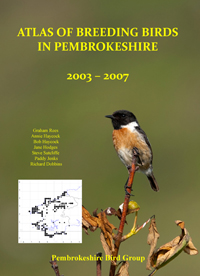Sterna hirundo/ paradisaea
Many more pass through on autumn passage, July to October, than in spring, with occasional accumulations of 100 to 800 birds having been noted off St Ann’s Head, Skokholm, Broad Haven (north) and sea area between Point St John, St David’s Head and the Bishops and Clerks as far out as Bais Bank. However, the majority have been recorded passing along the north coast at Strumble Head. Normally up to 30 per day were seen but periodically larger passages occurred, the largest on record being 190 on the 11th September 1984, 458 on 2nd September 1988, 459 on 27th August 1990, 256 on 11th September 1992, 363 on 4th September 1997, 375 on 1st September 1998, 199 on 17th August 2002, 726 on 31st August 2005 (an additional 151 Common Terns identified as well) and 501 on 8th September 2009.
These large movements have occurred with moderate to strong south or south-east winds, usually accompanied by poor visibility due to rain or drizzle. The terns have arrived on a north-west to south-east track, suggesting they had come from the Wicklow coastal area. The exception was on the 27/8/90 when they arrived from a north-easterly direction, presumably caused by a previous accumulation in Cardigan Bay moving on en masse, there being a moderate south-west wind and good visibility at the time.
Many more Common than Arctic Terns are identified in the county, so probably make up the majority of reported “Commics”.
Graham Rees.
(Covers records up to and including 2009).
 Wednesday, October 23, 2013 at 9:05AM
Wednesday, October 23, 2013 at 9:05AM  1949 BoP in
1949 BoP in  Arctic Tern
Arctic Tern 

